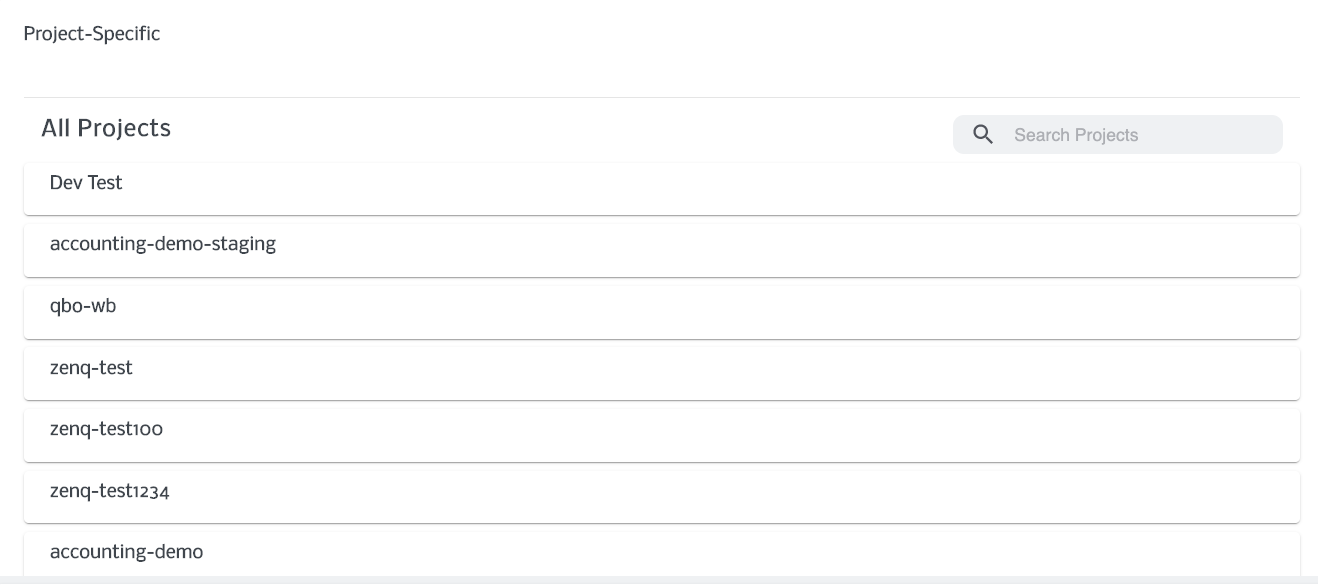Column Visibility
On this page:
- What is Column Visibility?
- Accessing Column Visibility
- Column Visibility Overview
- Global Settings, Project-Specific Settings, All Columns
- Changing Visibility Settings
What is Column Visibility?
While your database contains huge volumes of valuable data, your users are typically only seeking out specific information or answers when they are querying. If the data returned to them doesn't meet their expectations, they are less likely to have a positive user experience.
In particular, when an excess of information is returned, users may experience cognitive overwhelm, especially if they don't see information as relevant to the task at hand.
So, we've made it easy for Integrators to control the density of data returned to their users through the Column Visibility section of the Portal and directly through our API. Controlling the visibility of columns enables Integrators to reduce unnecessary "noise" in the data that is being returned and displayed to users.
Looking to manage column visibility directly through the API?Find the information you need here.
Accessing Column Visibility
Navigate to "Manage Database" in the Integrator Portal and select "Column Visibility".
This section of the Portal enables Integrators to simplify the process of controlling which columns within the database are displayed to End Users when they receive a data response.
Column Visibility Overview
We know that displaying every column related to a given query isn't always valuable for users. We built Column Visibility controls to enable Integrators to set restrictions on the information that is made visible to users to ensure that valuable data is being displayed efficiently and effectively.
In this section, Integrators will find Settings (Global and Project-Specific) and a list of All Columns contained in their database.

The visibility of individual columns can be set to one of the following:
- Hidden (restricted from showing up in data responses/not visible to End Users)
- Visible (shows up in data responses/is visible to End Users)
Global Settings, Project-Specific Settings, All Columns
Column Visibility can be managed on two different levels:
- Global
- Project-Specific
All Columns are visible by default
Global Settings
Global Settings store your system-wide visibility restrictions. These settings are applied to all Projects.
In the example below, the "vendor_balance" column has been hidden for all Projects. This Global Setting can be changed by clicking the checkbox parallel to the column name.

Project-Specific Settings
Project-Specific Settings store visibility restrictions set for individual Projects.
Here, all Projects are listed by name and can be searched using the search bar on the right hand side. Click on any Project to view and edit the visibility of columns on a Project-Specific basis.

All Columns
Below Global and Project-Specific Settings, you'll find a list of "All Columns" which displays a list of all of the columns contained in your database.
Here, you can see what columns are visible and what columns are hidden for all Projects (Global Settings) and for individual Projects (Project-Specific Settings).
To view Column Visibility for any column in your database, scroll through the list of columns or search for a specific column using the search bar on the top right side of the page.

- Visible Everywhere (Visible) - When a check mark is displayed beside "Visible Everywhere", the column is visible for all Projects (this is a Global Setting).
- Visible Everywhere (Hidden) - When the check mark is not displayed beside "Visible Everywhere", this implies that the column is hidden for all Projects (this is also a Global Setting).
To view Column Visibility for a specific Project, you can search by Project under "Project-Specific Settings" or navigate to "All Columns", select the column you are interested in viewing/editing, and search by Project.

All Projects are displayed by Project Name and Project Type.
- All Projects (Visible) - When a check mark is displayed beside a specific Project or a number of Projects, the column is visible for the Project(s) in question.
- All Projects (Hidden) - When the check mark is not displayed beside a specific Project or a number of Projects, the column is hidden for the Project(s) in question.
Changing Visibility Settings
In the Portal
Visibility of each column is indicated by a check mark (implies that the column is showing/is visible) or the absence of a check mark (implies that the column is restricted/is hidden).
To control the visibility of a column in the data responses received by your users, find the column you would like to show or hide and select or de-select it. The visibility of individual columns can be set to one of the following:
- Hidden - No check mark (column is restricted from showing up in data responses/is not visible to End Users)
- Visible - Check mark (column shows up in data responses/is visible to End Users)

Change a Setting Globally
- If you wish to hide a column across all Projects, de-select the "Visible everywhere" checkbox. This will hide the selected column across all Projects.
- To make a column visible across all Projects, simply re-select the "Visible everywhere" checkbox. This will make the column visible across all Projects.
Change a Setting for a Specific Project
- If you wish to hide a column for a specific Project (or Projects), de-select the checkbox beside the Project (or Projects).
- To make a column visible for a specific Project (or Projects), simply re-select the "Visible everywhere" checkbox. This will make the column visible for the Project or Projects you have selected.
With the API
To control Column Visibility directly through the API, see below:
-
Fetch a full list of columns with GET /autoql/api/v1/query/column-visibility
-
Fetch Column Settings with GET /autoql/api/v1/query/column-visibility-setting
-
Modify Global Settings with PUT /autoql/api/v1/query/column-visibility-setting
-
Modify a Project-Specific Setting with PUT /autoql/api/v1/query/column-visibility-setting/{project_id
Updated 4 months ago
